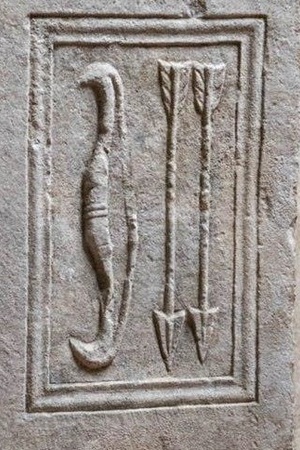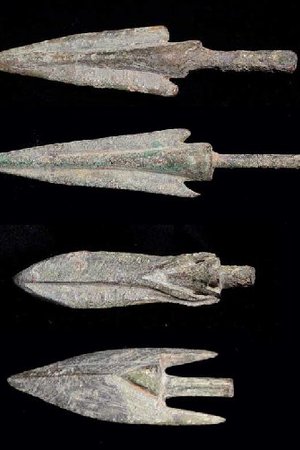Arrows
An arrow (Latin: saggita) is a projectile used for shooting from a bow or bow-like mechanisms, such as a gastraphetes or a manuballista. Arrows consist of a slender shaft with a sharp metal tip on one end and feathers on the other end, providing aerodynamic stability during flight. In earlier stages of history, predating antiquity, arrows could be made of stone or bone. Quivers were typically used for carrying arrows.
To make arrows, straight branches and shoots were often used, and they could also be carved from split wood. Alongside wood, reed was also utilized. For accurate shooting, a straight shaft was necessary, and the wood's curvature was sometimes corrected by heating it over a fire.
For both high accuracy and penetrating power, arrowheads in the form of narrow pyramids were preferred. The Scythians were the first to cast faceted bronze arrowheads.
Archaeological findings of arrowheads and reliefs depicting warriors with bows, arrows, and quivers have survived to this day.
For manuballistas, gastraphetes, and larger war machines, larger arrows were used, with the feathering varying depending on the geometry of the mechanism's barrel section.
Related topics
Sagittarius, Sagittarius-Gladiator, Bow, Quiver, Projectiles, Ballistae and Bersnwark
Literature
Armament of the nomads of Gorny Altai of the Xiongnu period Khudyakov Yu S pdf
Arrows of Ancient and Medieval Cultures of Eurasia-Kishchenko In pdf





